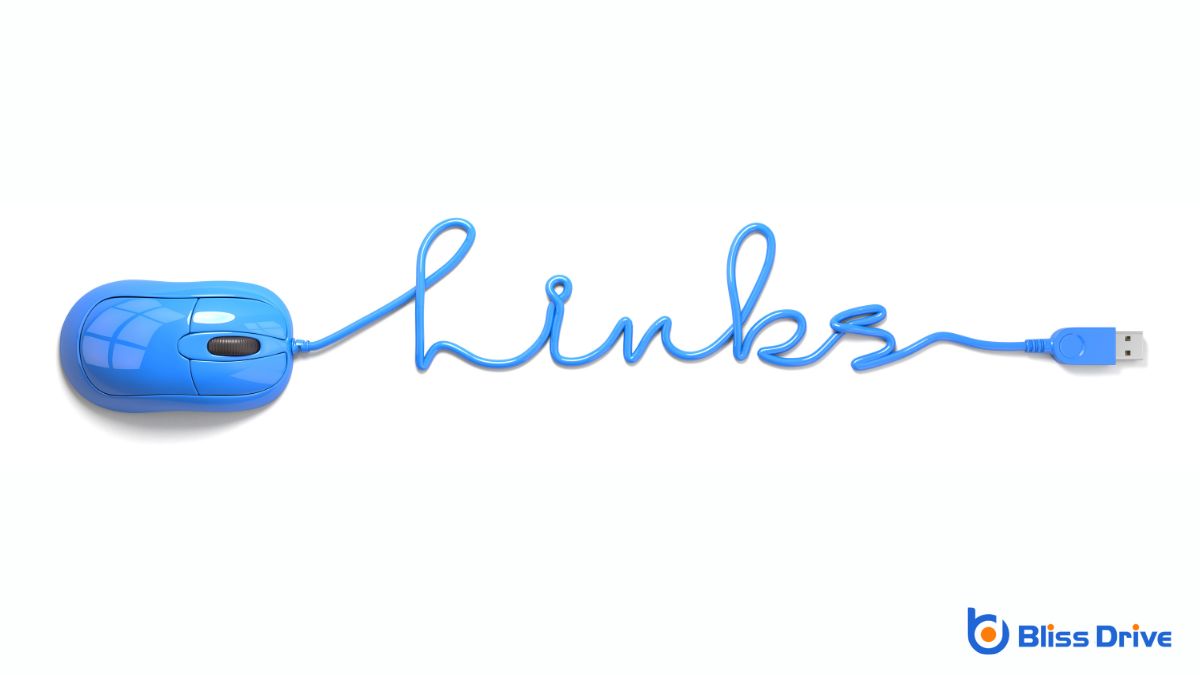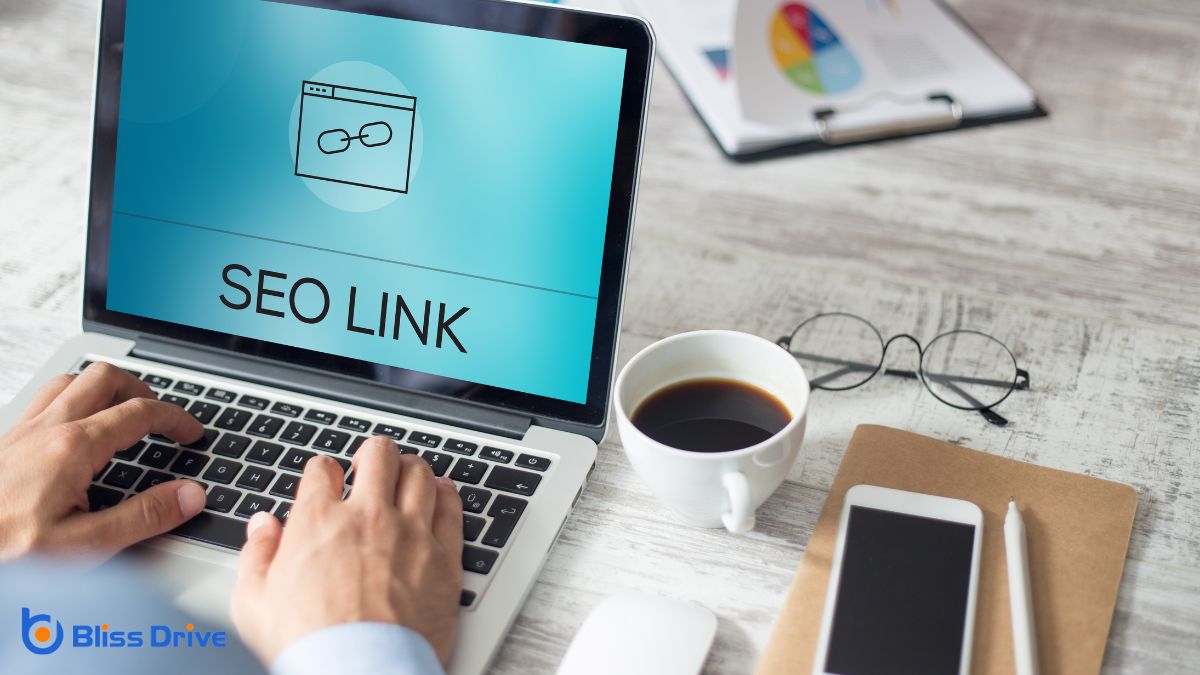Learn More About Us

Internal links play an essential role in enhancing your website's UX and SEO. They guide users through relevant content, improving navigation and ensuring they find what they need. For SEO, internal links help search engines index your pages more effectively and distribute page authority throughout your site. By using descriptive anchor textThe clickable text in a hyperlink, important for SEO as it provides context for the linked page. and maintaining a logical link structure, you enhance keyword relevance and site performance. Stick around to see how internal links can transform your website into a well-oiled machine.

Maneuvering a website should feel intuitive, and that's where internal links come into play. They guide you seamlessly from one page to another, creating a coherent journey through content.
Imagine browsing a website without internal links; you'd struggle to find related information or navigate efficiently. These links act like signposts, helping you discover more without dead ends or unnecessary clicks.
Internal links not only improve navigation but also distribute page authority across your site. By strategically placing them, you guarantee that visitors can easily access important pages, enhancing their browsing experience.
When you know where to go next, it reduces frustration and keeps you engaged longer. Understanding the importance of internal links helps you appreciate their role in a well-structured, user-friendly website.
When you strategically incorporate internal links, you create a cohesive and engaging user experience that encourages visitors to explore more of your content. By guiding users through related topics, you help them find valuable information effortlessly.
It’s like giving them a roadmap that highlights your site's best features, keeping them engaged longer.
Consider linking to pages that naturally extend the conversation or offerThe specific product or service being promoted by affiliates. additional insights. This not only makes your website easier to navigate but also shows users that you understand their needs.
Immerse yourself in analyticsThe systematic computational analysis of data or statistics to gain insights and support decision-ma... to identify which pages attract interest, and use these insights to refine your linking strategy. By prioritizing relevance and user intent, you'll foster a seamless experience that builds trust and encourages return visits.
When you strategically use internal links, you boost your page authority by signaling the importance of certain pages to search engines.
They also enhance crawlingThe process by which search engines discover new and updated web pages to index. efficiency, helping search engines index your site more effectively.
With these elements in place, your SEO performance can see significant improvement.
To truly understand the role of internal links in boosting page authority, you need to recognize how they distribute value across your website. Internal links act as pathways, guiding both users and search engines through your content.
By strategically linking to your important pages, you’re signaling their relevance and increasing their authority. When a high-authority page links to a lesser-known one, some of its value transfers, helping the latter rank better in search results.
You should focus on creating a logical structure, ensuring that each link serves a purpose. Avoid overloading any single page with links, as it dilutes value.
Instead, balance your linking strategy to maintain a cohesive flow. This approach strengthens your site's overall authority and boosts individual page rankingsThe position at which a website appears in the SERP..
Internal links play a crucial role in enhancing crawling efficiency, guaranteeing that search engines can effectively navigate your site. By connecting your pages logically, you help search engine bots find and index content faster and more accurately.
Think of internal links as signposts guiding crawlers through your content maze. When you strategically place these links, you’re fundamentally telling search engines which pages are important and how they’re related.
To improve crawling, verify that your site's structure is logical and that your links are clear and relevant. This setup not only aids in better indexingThe process of adding web pages into a search engine's database. but also enhances the likelihood of your content appearing in search results.
You can boost your website's page authority by strategically using internal links to distribute link equity effectively.
These links also send strong keyword relevance signals to search engines, helping them understand your content better.
Plus, they improve page crawling efficiency, ensuring all your important pages get indexed.
While internal links may seem like a minor detail in the grand scheme of website design, they play an essential role in enhancing link equity distribution and boosting page authority.
By strategically linking relevant pages, you create pathways for both users and search engines. This guarantees that link equity, or the "SEO value" from your backlinksLinks from other websites pointing to your website, crucial for SEO., flows properly throughout your site. You can think of it like a network of roads, guiding visitors and search bots to key content areas.
When you distribute link equity effectively, you help less visible pages gain authority, ultimately improving overall site performance.
It's vital to link from high-authority pages to those needing a boost. This strategy not only elevates lesser-known pages but also strengthens your site's internal hierarchy.
To enhance keyword relevance signals, linking strategically within your site is vital. By doing this, you’re not just connecting pages; you’re telling search engines which topics are important.
When you link a keyword-rich anchor text to a relevant page, it boosts its authority on that subject. Think of it as passing a vote of confidence from one page to another. This helps search engines understand what each page is about and how they relate to each other.
Choosing the right keywordsWords or phrases that users type into search engines to find information. for your anchor texts is essential. Use terms that match users' search intents. This way, you’re aligning your content with how people search, improving your chances of ranking higher.
Fundamentally, thoughtful internal linkingLinks that connect different pages on the same website. makes your site more coherent and authoritative in the eyes of search engines.
Boosting keyword relevance signals sets the stage for another important aspect of internal linking: improving page crawling efficiency.
When you strategically use internal links, you guide search engine crawlers through your website more effectively. This means they can index your pages faster, ensuring that all your content is discoverable. Think of internal links as signposts that direct crawlers to high-priority pages, helping search engines understand your site's structure.
Additionally, internal links distribute page authority evenly across your site. When a high-authority page links to another, it passes some of its authority, boosting the linked page’s visibility.
Implementing best practices for optimizing your internal link structure can greatly enhance both user experience and search engine optimization.
Start by ensuring your links are relevant and leadA potential customer referred by an affiliate who has shown interest in the product or service but h... to valuable content. This keeps users engaged and helps search engines understand your site's hierarchy.
Use descriptive anchor text to provide context; it informs users and search engines about the linked content.
Keep your link depth shallow—important pages should be accessible within a few clicks. This boosts user satisfaction and helps search engines efficiently index your site.
Regularly audit your links to remove broken or outdated ones, maintaining a seamless navigation flow.
Finally, prioritize links on your homepage and high-traffic pages, directing users to essential content effectively.
When structured effectively, internal links play a critical role in guiding search engines through your site. They act like a roadmap, helping search engines discover and index your content more efficiently. By strategically linking relevant pages, you guarantee that search engine crawlers can easily navigate your site, improving the likelihood of all important pages being indexed.
Internal links also distribute link equity, which is the value passed from one page to another. This process helps boost the visibility of pages that might otherwise get overlooked. When you link to high-value content, search engines recognize its significance, potentially improving its rankings.
It's crucial to maintain a logical and intuitive internal linking structure, as this aids both search engines and users in finding valuable information on your site.
When you're crafting internal links, using descriptive anchor text is key to enhancing both keyword relevance and user navigation.
It helps search engines understand the context of your pages and guides users seamlessly through your site.
Although it might seem minor, choosing descriptive anchor text plays a pivotal role in enhancing both user experience (UX)The overall experience a user has when interacting with a website or application, including usabilit... and search engine optimization (SEO). When you use clear, descriptive text for your links, you guide users to the content they expect, reducing confusion and increasing satisfaction.
It’s not just about making links catchy—it's about providing context. Users should know exactly what they’ll find when they click a link. This clarity helps search engines understand the content's relevance, which can boost your site's visibility in search results.
Keep your anchor text concise yet informative. Avoid generic phrases like "click here." Instead, use specific keywords that reflect the destination page’s content.
This approach not only improves navigation but also strengthens your site’s SEO performance.
Descriptive anchor text doesn't just improve user navigation; it also enhances keyword relevance, a critical component for effective internal linking.
When you use precise anchor text, search engines better understand the context and content of your pages, boosting your site's SEO performance.
Here’s how you can use anchor text effectively:
By effectively utilizing anchor text in your internal links, you can greatly enhance user navigation throughout your website.
Start by choosing descriptive and relevant anchor text that clearly indicates what users will find when they click the link. This helps users anticipate the content, improving their overall experience and reducing confusion. Avoid generic phrases like "click here" because they don't provide context. Instead, opt for specific keywords that align with the linked page's content.
Ensure your anchor text naturally fits within your content. This makes it easier for users to follow the flow of information and seamlessly move between related topics.
When crafting an effective internal linking strategy, it’s crucial to steer clear of common pitfalls that can undermine both user experience (UX) and search engine optimization (SEO). Missteps can confuse users and prevent search engines from understanding your site's structure.
Here are several mistakes to watch out for:
Although often overlooked, internal links play an essential role in enhancing user engagementThe level of interaction and involvement users have with social media content. on your website.
They guide visitors to relevant content, keeping them on your site longer. When users find links that align perfectly with their interests or queries, they're more likely to explore further.
This not only boosts engagementThe interactions that users have with a brand’s content on social media. but also reduces bounce rates, a key factor in improving overall site performance.

Understanding how internal links enhance user engagement naturally leads to examining the tools and techniques you can use to audit them effectively. You need to guarantee that your internal linking strategy is solid and efficient.
Start by leveraging tools that provide thorough insights into your website's link structure. Here are essential tools and techniques to contemplate:
These tools streamline the auditing process, guaranteeing an optimized user experience.
By strategically utilizing internal links, you can greatly enhance both user experience and SEO on your website. They help guide users effortlessly through your content, boosting engagement and satisfaction. At the same time, internal links distribute page authority, improving your site's search engine rankings. Remember to use clear anchor text and avoid common pitfalls, like broken links or over-linking. Regularly audit your internal link structure to verify it's optimized and effectively supporting your website's goals.
